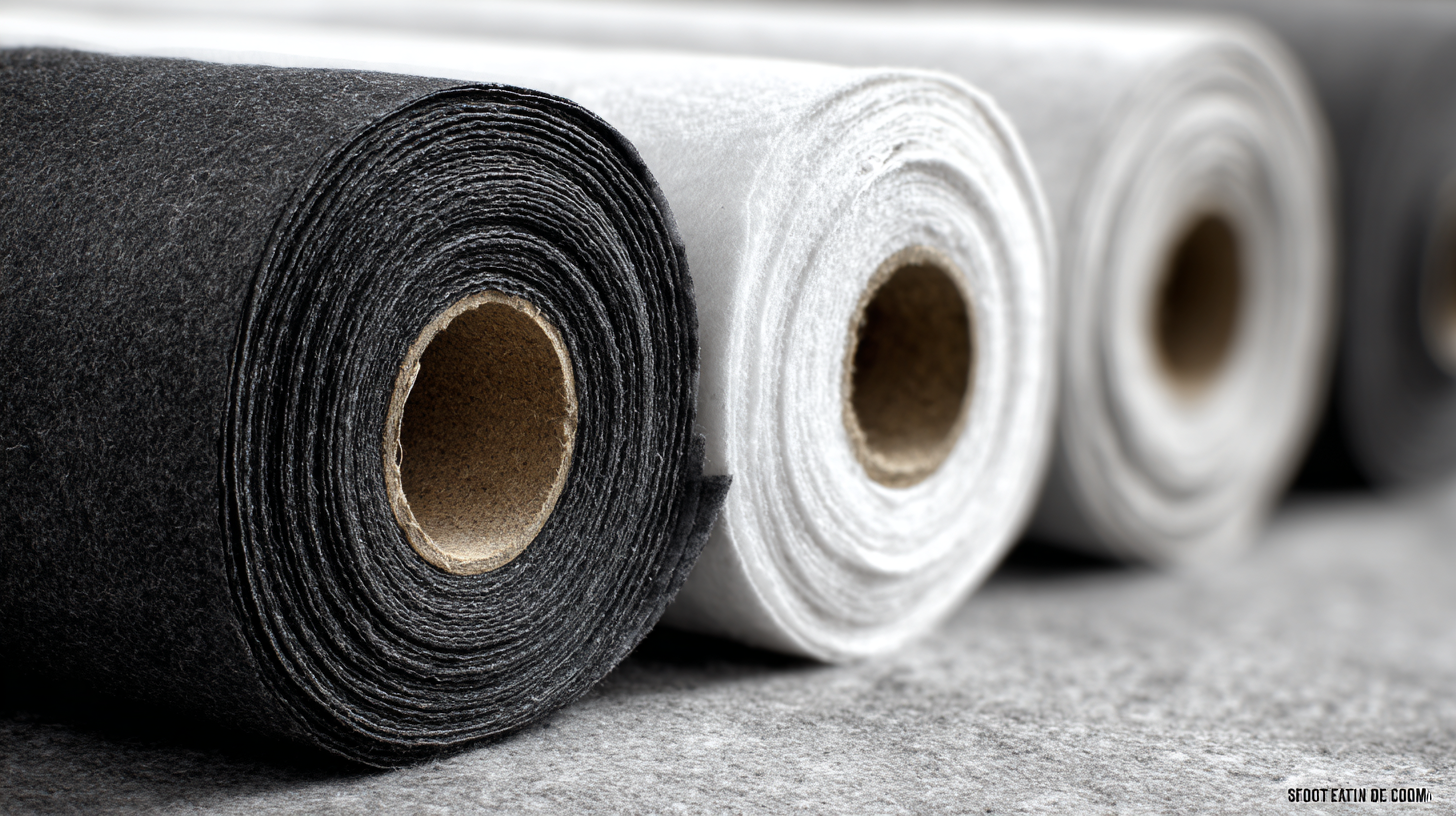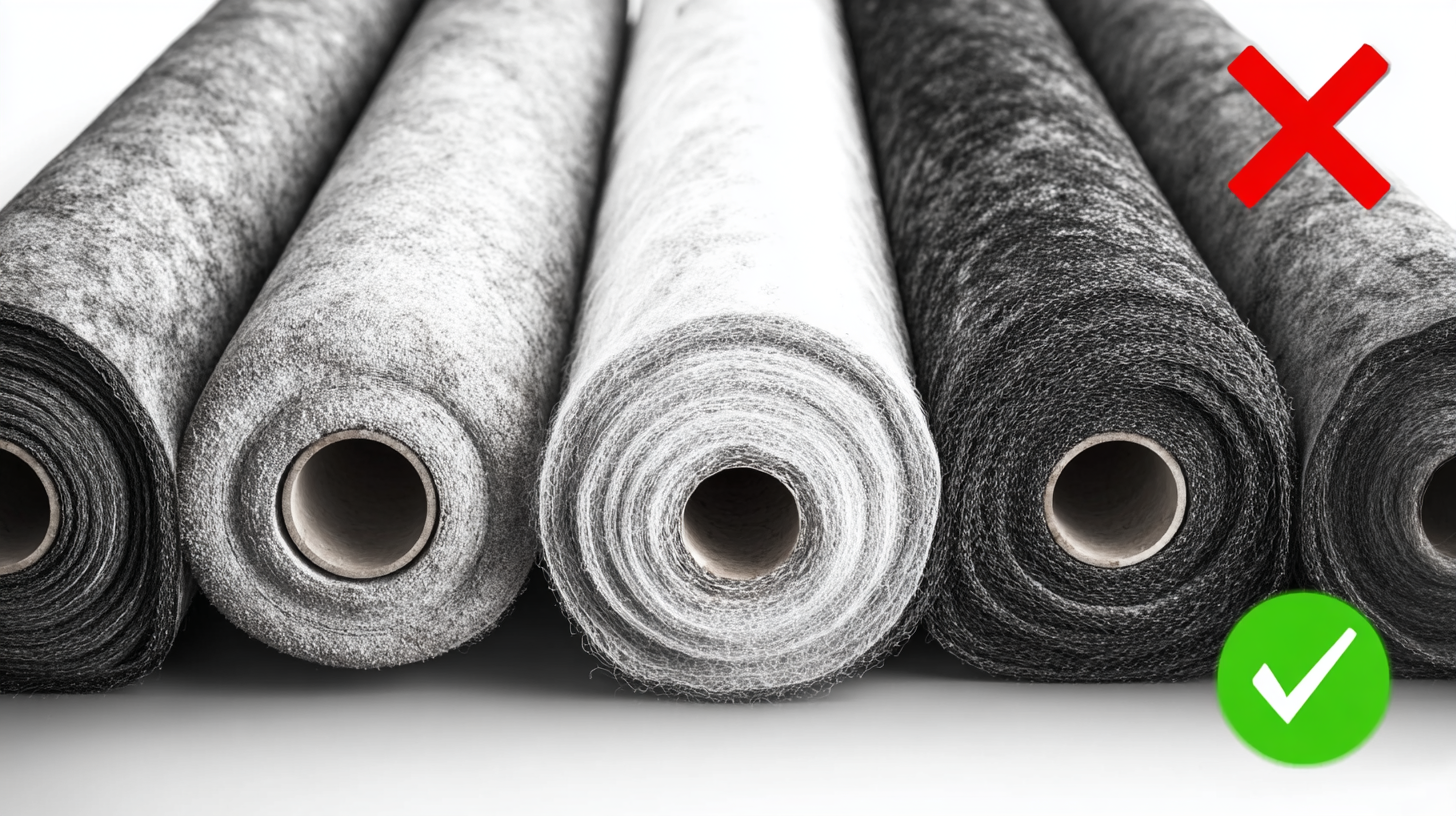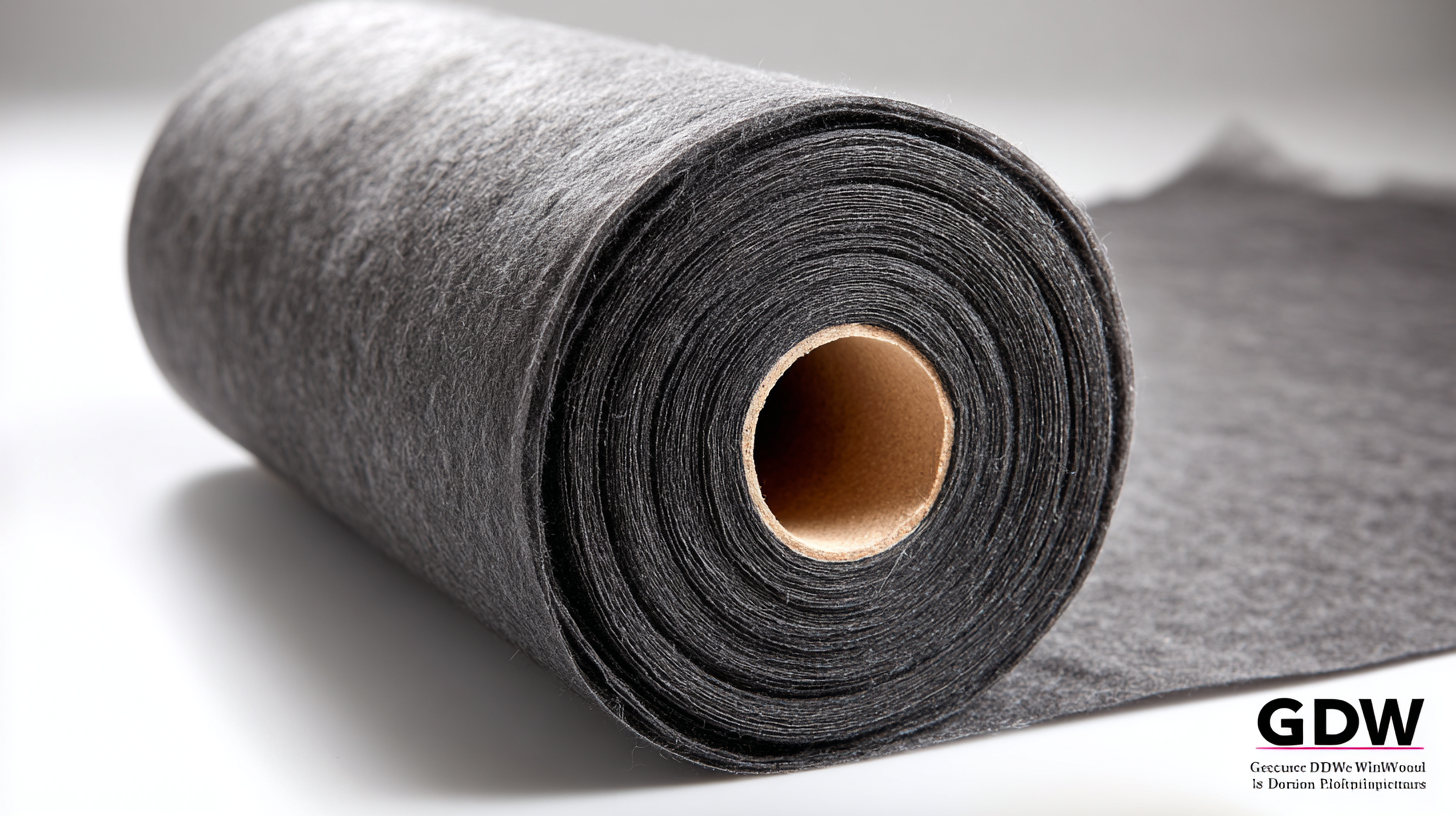Inquiry
Form loading...
- Phone
- E-mail
In today’s rapidly evolving construction and civil engineering landscapes, the selection of the appropriate materials is paramount for ensuring project success and longevity. Among these materials, Geotextile Membrane Non Woven has emerged as a pivotal component due to its versatile applications and performance characteristics. According to a recent market analysis by ResearchAndMarkets, the global geotextile market is projected to reach USD 13.41 billion by 2026, highlighting the growing demand for innovative solutions in soil stabilization, drainage, and erosion control. This surge can be attributed to the rise in infrastructure spending and an increasing focus on sustainable construction practices. As we delve into the ultimate guide to choosing the best Geotextile Membrane Non Woven for your project, we will explore not only the technical specifications and benefits of these materials but also industry case studies that illustrate their effectiveness in various applications, ensuring you make an informed decision tailored to your specific needs.

Geotextile membranes non woven play a crucial role in various construction and landscaping projects. These fabrics, made from synthetic fibers, provide essential functions such as
separation,
filtration,
and drainage. According to a report by MarketsandMarkets, the global geotextile market is projected to reach $16.2 billion by 2025, with non woven geotextiles dominating the landscape due to their versatility and effectiveness in numerous applications.
Non woven geotextile membranes differ from woven varieties primarily in their construction process. Instead of interlacing fibers, non woven membranes are created through methods such as needle punching or heat bonding, resulting in a material that is both porous and durable. This unique structure allows for superior water permeability and soil separation, making them ideal for erosion control, road construction, and landfill projects. Research published in the Journal of Geotechnical and Geoenvironmental Engineering indicates that using non woven geotextiles can significantly enhance the stability and longevity of roads by preventing soil intermixing and maintaining drainage layers.
Furthermore, these membranes contribute to environmental sustainability, as they are often produced from recycled materials and can be reused or recycled at the end of their lifespan. Their ability to filter out sediments while allowing water to pass through helps in maintaining local ecosystems, leading to better water quality in surrounding areas. As the industry continues to grow, understanding the fundamental characteristics and benefits of non woven geotextile membranes becomes imperative for making informed decisions in project planning and execution.
When selecting a non-woven geotextile membrane for your project, understanding the different types available is crucial. Non-woven geotextiles are made from synthetic fibers that are bonded together through mechanical, thermal, or chemical processes. These membranes excel in filtration, separation, and drainage applications, making them indispensable in civil engineering and landscaping. According to a report from Grand View Research, the global geotextile market size was valued at $4.66 billion in 2022 and is expected to expand at a CAGR of 8.4% from 2023 to 2030, highlighting the increasing demand for these materials across various industries.
Among the various types of non-woven geotextile membranes, needle-punched and heat-bonded are the most common. Needle-punched membranes are particularly effective for drainage applications due to their high permeability and durability. They can withstand harsh environmental conditions, making them ideal for road construction and erosion control. Heat-bonded geotextiles, on the other hand, offer superior strength and a more consistent thickness. A study by the Geosynthetic Institute indicated that the use of non-woven geotextiles can reduce construction costs by up to 30% while simultaneously enhancing the lifespan of the projects. Understanding these options is essential for making informed decisions and ensuring project success.
When selecting a non-woven geotextile membrane for your project, understanding the key properties is crucial to ensuring optimal performance. One of the most important factors is the fabric's permeable flow rate, which indicates its ability to manage water efficiently. According to the U.S. Army Corps of Engineers, an effective geotextile should exhibit a flow rate of at least 2 to 5 cm/sec to efficiently prevent soil erosion while allowing adequate drainage. This property is particularly vital in applications such as road construction and slope stabilization.
Moreover, tensile strength is another key property to consider. A study published by the Geotextile Materials Association reveals that high-quality non-woven geotextiles typically have tensile strengths ranging from 10 to 50 kN/m. This strength is essential for applications that require reinforcement, such as earthworks and heavy load-bearing surfaces. Additionally, the environmental resistance of the material to UV exposure and chemical degradation is essential; for instance, ASTM D4355 standards highlight that robust non-woven geotextiles should maintain at least 70% of their initial tensile strength after 500 hours of UV exposure. By prioritizing these properties, you can ensure thorough protection and longevity for your specific application.
| Property | Description | Importance |
|---|---|---|
| Aperture Size | Determines the ability to retain soil particles while allowing water to flow through. | Essential for soil stability and erosion control. |
| Grab Tensile Strength | Measures the resistance to tearing and helps ensure the membrane withstands forces. | Critical for durability and performance in high-traffic areas. |
| Water Permeability | Indicates how easily water can flow through the membrane, affecting drainage effectiveness. | Important for managing water levels and preventing accumulation. |
| UV Resistance | Measures how well the membrane withstands degradation from sunlight exposure. | Vital for outdoor applications to ensure longevity. |
| Chemical Resistance | Indicates the membrane's ability to resist degradation from environmental chemicals. | Crucial for projects near agricultural lands or industrial sites. |
| Thickness | Determines the overall sturdiness and barrier properties of the membrane. | Influences strength and durability under load. |
When selecting materials for your project, it is essential to understand the benefits of non-woven geotextiles compared to alternative options. Non-woven geotextiles are made from synthetic fibers that are bonded together through various methods, offering distinct advantages such as excellent filtration properties and high durability. Unlike woven geotextiles, which rely on a grid-like structure for strength, non-woven fabrics provide a more flexible solution, making them ideal for applications where soil stabilization and drainage are paramount.
In contrast, some alternatives such as woven geotextiles or natural materials may lack the versatility and performance efficiency of non-woven options. Woven fabrics are effective for reinforcement but can be less effective in drainage scenarios that non-woven varieties excel in. Meanwhile, natural options such as jute or coir might be environmentally friendly but often do not provide the same level of durability or specific engineering properties as synthetic non-woven geotextiles. Evaluating these differences will help determine the most suitable material for your project's unique requirements, ensuring optimal performance and longevity.

When considering geotextile membranes for your project, the cost-benefit analysis is crucial, particularly for non-woven options. According to a report by the Geosynthetic Institute, non-woven geotextiles can significantly lower installation costs due to their lightweight and easy handling properties. This allows for reduced labor expenses and faster project completion times, making it an economically sound choice for many applications, particularly in drainage and filtration systems.
Moreover, the long-term performance of non-woven geotextiles justifies the initial investment. A study from the International Geosynthetics Society indicates that these materials can enhance soil stability and erosion control, leading to decreased maintenance costs over time. With a longevity of 20 to 30 years under proper conditions, the use of non-woven geotextiles provides substantial savings in both repairs and replacements, proving to be a valuable addition to any construction or landscaping project. By weighing these factors and industry reports, it's clear that non-woven geotextiles can deliver robust performance and economic advantages in the long run.

